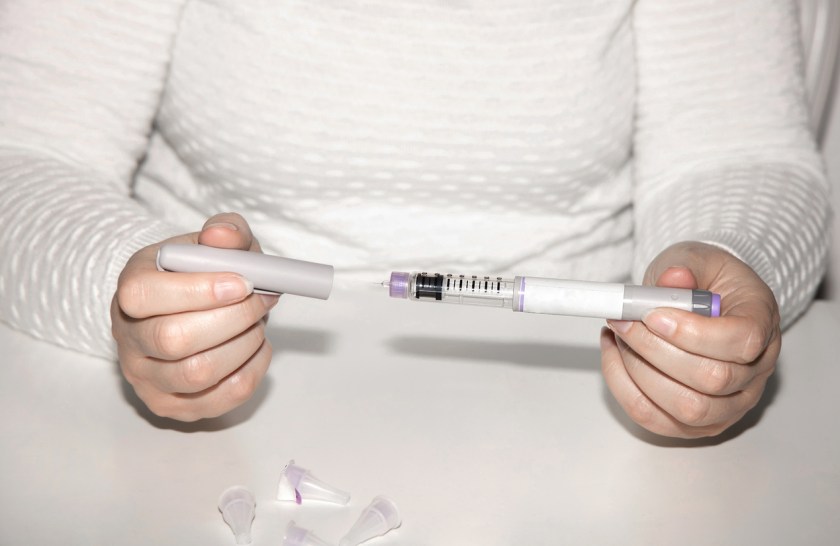This is the impact of GLP-1 medications on skin and plastic surgery, with some surgeons describing their patients skin as similar to a “stretched elastic band”.
It might seem like everyone is on GLP-1 medications these days, and that’s because a significant number of people are. According to a recent poll, about six percent of U.S. adults—roughly 15.5 million people—have taken a GLP-1 medication. Many of these individuals are now seeking plastic surgery to address the changes that can accompany rapid weight loss, such as excess skin.
Jason Diamond, MD, FACS, a double board-certified facial plastic surgeon, reports that approximately 10 to 15 percent of the patients in his Beverly Hills practice—about one person per day—have taken a GLP-1 medication for weight loss.
But this story isn’t just about the popularity of these medications; it’s about what plastic surgeons are observing in the operating room when treating patients on GLP-1s. These surgeons, who get an up-close view of their patients’ tissues, have noticed that the skin of GLP-1 users doesn’t always behave like typical skin.
Julius Few, MD, a board-certified plastic surgeon in Chicago and Beverly Hills, was the first to highlight this trend. He noted a significant difference in skin quality between patients who were on a GLP-1 versus those who weren’t.

What the Pros Are Seeing
Plastic surgeons are uniquely positioned to notice subtle changes because their work involves manipulating both the skin and the tissues beneath it. During procedures on GLP-1 patients, Dr. Few observed that their skin reminded him of an “old, overused rubber band.” Similarly, Mark Mofid, MD, a board-certified facial plastic surgeon in San Diego and La Jolla, compared it to a stretched-out elastic waistband on underwear.
Dr. Diamond, who specialises in facelift surgeries, has noticed that the SMAS layer—the subcutaneous musculoaponeurotic system, a layer of connective tissue supporting the face—appears “thinner and weaker” in GLP-1 users.
Typically, this layer thins naturally with age, contributing to facial sagging. Since the success of a facelift heavily depends on the strength of the muscle layer rather than just pulling the skin, a weakened SMAS could impact facelift outcomes.
Dr. Few estimates that around 25 to 30 percent of his patients are currently on a GLP-1 and notes that their skin “doesn’t hold its elastic recoil the way it used to.” He describes how the skin takes on the appearance of an older person’s, losing its ability to retain its shape around facial structures, leading to sagging, particularly around the jawline.
Where They’re Seeing It
You’ve likely heard of “GLP-1 face,” a term coined for the sunken look that can result from rapid weight loss. Umbareen Mahmood, MD, a board-certified plastic surgeon in New York City, has observed “accelerated aging in the face” of patients who have lost significant weight on a GLP-1, including increased fine lines, jowling, periorbital hollowness, and skin crepiness. However, the effects aren’t limited to the face. Dr. Mahmood has also seen increased laxity in the skin of the breasts, abdomen, arms, and thighs.
Because of the surge in GLP-1 use, doctors are now dealing with a new category of patients—those who have lost weight quickly but not to the extent usually seen in patients who undergo massive weight loss procedures like gastric bypass surgery. As a result, procedures like lower body lifts, arm lifts, and thigh lifts, typically reserved for more dramatic weight loss cases, are being reconsidered for GLP-1 users who may have lost just 20 to 50 pounds but are dealing with loose skin.
Why It’s Happening
GLP-1 medications work by suppressing appetite and slowing digestion, mimicking hormones that make the brain feel full. But what happens on a biological level that might cause the skin to behave like a stretched-out elastic band? The skin’s structure relies on collagen, elastin, and fat.
When weight loss occurs gradually, the skin can often retract appropriately. However, when weight loss is rapid, whether through extreme dieting, surgery, or a GLP-1, the skin may not respond as effectively.
Dr. Mahmood explains that the skin’s collagen and elastin fibers can become damaged and thinner overall when weight loss is accelerated, leading to sagging skin. Preliminary studies suggest that GLP-1 medications might specifically affect tissues by “turning off” adipose-derived stem cells in the upper dermal layers of the skin, which are crucial for collagen, elastin, and hyaluronic acid production. This could mean that the skin loses its youthful qualities and regenerative capacity.
What We Don’t Know Yet
Since GLP-1 medications are relatively new—Ozempic, for instance, was FDA-approved for type-2 diabetes in 2017, and Wegovy for weight loss in 2021—there’s still much to learn about their long-term effects on the skin. Some plastic surgeons, like Steven Teitelbaum, MD, haven’t observed significant changes in skin quality among their GLP-1 patients, while others, like Dr. Few, are concerned about potential lasting effects.
As GLP-1 usage continues to rise, especially for weight loss, the medical community will need to keep a close watch on how these drugs influence not just the scale, but also the skin. Whether these changes are temporary or permanent remains to be seen, but for now, patients considering or already taking GLP-1s should be aware of the potential impact on their skin and consult with their healthcare providers accordingly.
Read our latest issue below:
There are 5 ways you can catch up with SPA+CLINIC
- Our quarterly print magazine, delivered to your door. Subscribe here.
- Our website, which is updated daily with its own completely unique content and breaking news.
- Our weekly newsletter – free to your inbox! Subscribe here.
- Our digital magazine – click here to view previous issues.
- Our social media – see daily updates on our Instagram, Facebook & Linkedin




